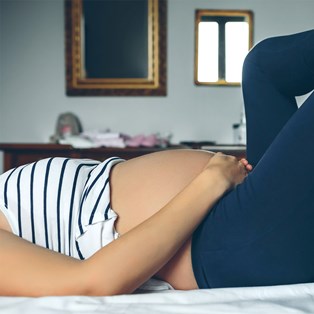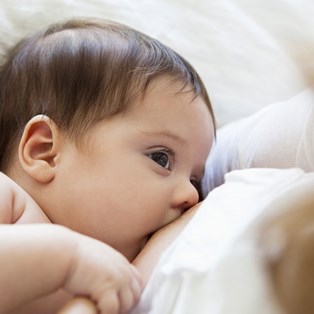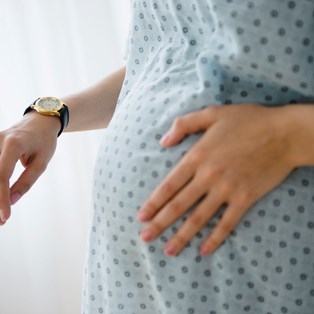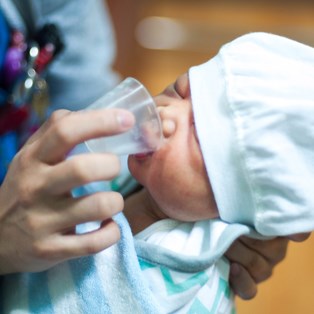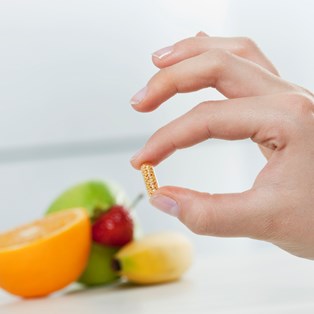Vagina after birth: the truth about vaginas after childbirth

Everything you need to know about your vagina after you've had a baby
By Frances Sheen
February 26 2019
Will my vagina change after I give birth?
Yes, although many women find the changes aren't quite as dramatic as they feared.
While your vagina and vaginal opening usually go back to size after a normal vaginal birth, there is stretching. If you've had a big baby, a baby with a big head, or several natural vaginal deliveries, it's unlikely your vagina will be EXACTLY the same as it was.
"The vagina is very resilient,” Dr Sherry Ross a women’s health expert explains, but expect it to take at least 12 weeks or up to a year before your vagina settles back into its long-term post-delivery state.
But exactly what can happen to vagina after the birth of your baby?
1. Tearing of the vagina
Vaginal tearing (or perineal lacerations) can occur during childbirth, when the baby's head crowns and comes out of the vaginal opening and it's either too large for the vagina to stretch around, or the head is a normal size but the vagina doesn't stretch easily.
These kinds of tears are relatively common, and because it's only the skin around the vagina, they typically heal on their own in the weeks following the birth. You don't usually need stitches (your midwife or obstetrician will tell you if you do), but where possible dissolving stitches will be used. As a result, usually you won't need to return to hospital to have them removed.
There is usually very limited or no scarring from this but your body will produce scar tissue to help close the tear and make the tissue strong again.
This tissue is not as flexible as the tissue that it is replacing so the perineum (the area between your vagina and your anus) may not stretch as much as it used to.
Before birth you can try perineal stretching and massage to help the perineum stretch.
WHAT HAPPENS WHEN YOU TEAR?
- First-degree tears only involve the skin around the vaginal opening or the perineal skin. These typically heal naturally within four weeks.
- Second-degree tears involve damage to the perineal muscles, which help support the uterus, bladder, and rectum, and usually require stitches. These also tend to heal within four weeks.
- Third-degree tears These are lacerations of the perineal muscles and the muscle around your anus. These might require a special surgical repair in an operating room, not the delivery room. These can take up to 12 weeks to heal.
- Fourth-degree tears These are the most serious and are rare. They can cause damage to the perineal muscles, muscles around the anus, and the tissue lining your rectum. Like third-degree tears, these usually need to be fixed iwith an operation, but they can take even longer than 12 weeks to heal. Your doctor will talk you through in depth what the recovery will look like and how you will feel post operation.
SEX AFTER TEARING
You should always wait at least six weeks after the birth before you start having sex and it's usual to wait until your doctor has performed a six or seven week postpartum check to ensure you can resume your sex life again.
You can also use lubricant during sex if it's uncomfortable.
If sex does cause discomfort that doesn't ease or even causes you pain, six weeks or more after childbirth, you should see your doctor.
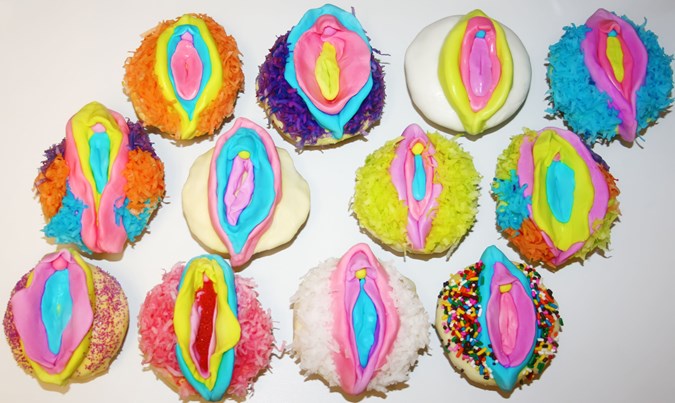
Getty
2. The effects of an episiotomy
Some births require an episiotomy. An episiotomy is sometimes known as a perineotomy, and it's a a surgical cut made to the perineum during childbirth. This is done to aid a difficult delivery - a baby with a large head or where there is difficulty in the baby crowning. An episiotomy helps delivery but also prevents the skin from splitting or tearing.
You'll probably need stitches to repair an episiotomy or tear. Dissolving stitches are used, so you won't need to return to hospital to have them removed. There is usually very limited scarring from this and most mums make a full recovery with no long-term scarring stitch marks.
3. Bleeding after birth
Vaginal bleeding after birth is also called lochia and it is completely normal and necessary. Many mums think of it as a long period after birth. Bleeding occurs if you have a vaginal birth or a caesarean section birth.
In the first 1–2 days after your baby is born, the blood is usually bright red in colour. On the first day, it will be like a very heavy period and you will probably use one maternity sanitary pad (a regular sanitary towel will not work as well) every hour. You can't use tampons during this time, because of a risk of infection.
Over the next several days, the bleeding will slowly get less each day and change colour from bright red to a pink or brown colour and then to a creamy colour. Most women will stop bleeding between four and six weeks after giving birth, but it might be longer or shorter - both are normal.
While it's unpleasant, the bleeding is normal and necessary. When the placenta comes away from the wall of the uterus (after your baby is born), there are open blood vessels that bleed. Your uterus contracts to squeeze these bleeding vessels shut. Over 7–10 days your uterus continues to contract, begins to heal and the bleeding gets less.
You might see blood clots which can be fairly large - this is entirely normal and unless they get bigger or are unusually large there is nothing to worry about. If you experience a sudden blood loss, or huge clots, seek medical help.
You won't be able to swim while you are bleeding after birth, because of a risk of infection (and you won't be able to use tampons) but you can shower or bath as normal or more frequently. If you notice a strong odour, contact your GP - it's easy for the area to become infected.

Getty
4. Dry vagina
A dry vagina is very common after birth, especially if you're breastfeeding, and it's down to hormone changes in your body.
Basically there are lower levels of oestrogen in your body compared to when you were pregnant. Oestrogen helps to keep your vaginal tissue moist with a clear lubricating fluid, according to the U.S. National Library of Medicine. Without enough oestrogen, your vagina will feel dry and possibly uncomfortable. If you're breastfeeding those levels of oestrogen are even lower than in those mums who aren't breastfeeding. You might hear this called 'vaginal menopause'. This doesn't mean you are going through the menopause, it's just the name given to the dryness before your vagina returns to its normal state.
If you have started having sex again and the dryness is causing problems, you can use a water-based lubricant. You can buy lubricant in pharmacies, supermarkets or online. Non-water-based lubricants can damage condoms and cause them to tear or rip.
Over time, and after you've stopped breastfeeding you should notice that your vagina returns to normal. However, if you are still concerned by the levels of dryness talk to your GP.
5. Itchy vagina after birth
Vaginal itching postpartum is totally normal and can be caused by a range of factors.
- If you tore your perineum or had an episiotomy and had stitches, you may find there is itching as the scar heals - just as you would with any scar on your body. Try not to itch if possible and always wash your hands when touching your perineum post-birth to avoid infection.
- It's not uncommon to get an infection following the birth of your child. You may get an infection in your uterus, or there is a small gland near your vagina called a Bartholin's gland. This sometimes gets infected after childbirth, causing severe discomfort in that area. You may even get an infection on any perineal stitches you had. Visit your doctor to discuss any treatment for these.
- Thrush. Natural changes in hormone levels, or taking antibiotics can cause a yeast infection, also known as thrush. This would cause an itchy vagina with some discharge - this can be treated with creams from the pharmacist or doctor.
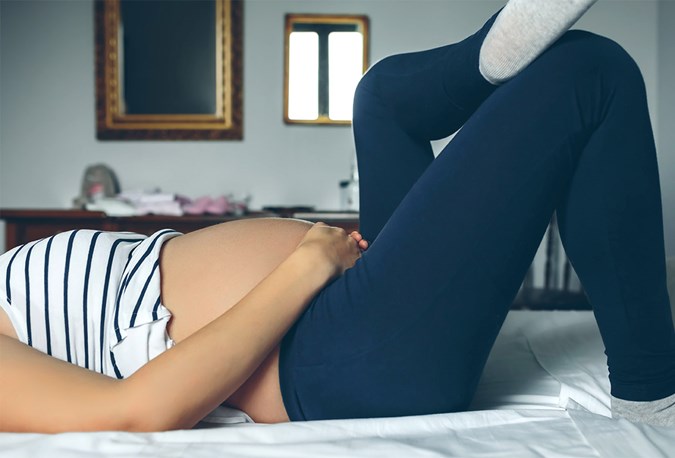
Getty
6. Swollen vagina
Unsurprisingly, your vagina will be tender, swollen and a bit mis-shaped after you've given birth - you have just pushed a baby out!
But that swelling after the delivery won't last long and your body should recover in the next few days or weeks following the birth.
From your labia to your perineum , you will feel different 'down there'. Ice packs should help, especially for the first 12 to 24 hours. Some women make a small horizontal cut in a maternity pad and slot in a long icy pole which can help wonderfully. Or try a nice warm bath - just make sure it isn't too hot.
Within a few days to a week after having your baby, the swelling and soreness of your labia should begin to subside. And two weeks postpartum, you should definitely be on the mend. If you haven't noticed significant improvement by then, ask your GP or midwife.

Getty
7. Wider vagina (change in size)
This is every woman's fear - that she will have a baby and her vagina will stretch making it noticeable to her and her partner that her vagina has changed.
Before you panic, here are the facts. Your vagina and your vaginal opening typically shrink back down after stretching but it can take from a few weeks for a year for everything to settle back down.
However, during a vaginal birth, having a big baby, a baby with a big head, or multiple vaginal deliveries make it less likely that your vagina will go back to the EXACT shape and size it once was.
BUT, you often do not notice this - and nor will anyone else. Yes, your vagina might be slightly wider than it was before the baby but it will be a subtle change.
“Some women notice tampons may not stay inside the vagina like they used to before having babies,” says Dr. Sherry Ross This doesn't mean it will fall out, but you might notice that you need a larger size. To help the situation try your pelvic floor exercises.
PELVIC FLOOR EXERCISES
You can feel your pelvic floor muscles if you try to stop the flow of urine when you go to the toilet.
It's not recommended that you regularly stop your flow of urine midstream as it can be harmful to the bladder.
To strengthen your pelvic floor muscles, sit comfortably and squeeze the muscles 10-15 times in a row.
Don't hold your breath or tighten your stomach, buttock or thigh muscles at the same time.
When you get used to doing pelvic floor exercises, you can try holding each squeeze for a few seconds.
8. Sex after birth
If you had a perineal tear or an episiotomy after a vaginal delivery, you’re probably going to have some degree of scar tissue afterwards, and yes this can make sex and the thought of having sex pretty unappealing.
The scar tissue usually heals over time, making sex more comfortable as time goes on. Use plenty of lubricant - and if you're using condoms make sure it is a water-based lubricant so it won't tear the rubber.
But if you find that it’s not getting better with time, talk to your doctor. Some women need surgery to remove the scar tissue—and get rid of the pain.
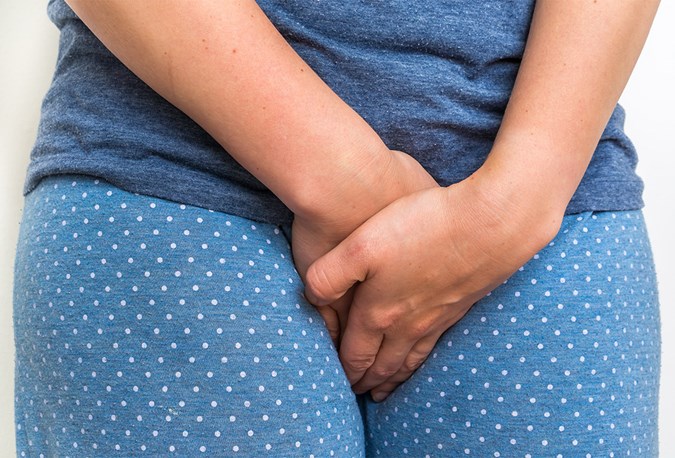
Getty
9. Urinary incontinence after childbirth
You have probably heard mums talking about how they can't bounce on trampolines, run or jump any more because they have some light bladder leakage.
This isn't un-common - urinary incontinence affects around 25 to 45 per cent of mothers to a varying degree.
It's because when you're pregnant, your body produces hormones that make the tissues and muscles supporting your bladder, bowel and uterus (womb) stretchier than normal.
These tissues and muscles are all part of your pelvic floor, and during pregnancy those muscles can weaken.
There are two types of urinary incontinence.
1. Stress incontinence.
This is when you sneeze or cough, jump, run for the bus or dance and a little bit of wee trickles out.
The way to ease this and improve your bladder control is to do regular pelvic floor exercises (see above). Try to do them three times a day if you can.
2. Urge incontinence.
About two-thirds of women with stress incontinence also get what is called urge incontinence, - caused by an overactive bladder. Symptoms include getting the sudden urge to go even though your bladder may be nearly empty, but you leak before you can get to the bathroom on time.
Pelvic floor exercises can help this condition too. If it's severe your doctor can talk to you about surgical options. But lifestyle changes can make a big difference with bladder control.
-
It's easier said than done but try to avoid caffeine, fizzy drinks and spicy foods – they can irritate your bladder and make it contract more easily.
-
Nicotine causes the muscles of the bladder to spasm, so try to give up smoking.
-
Lose excess weight. The extra kilos can put pressure on your pelvic floor muscles.





